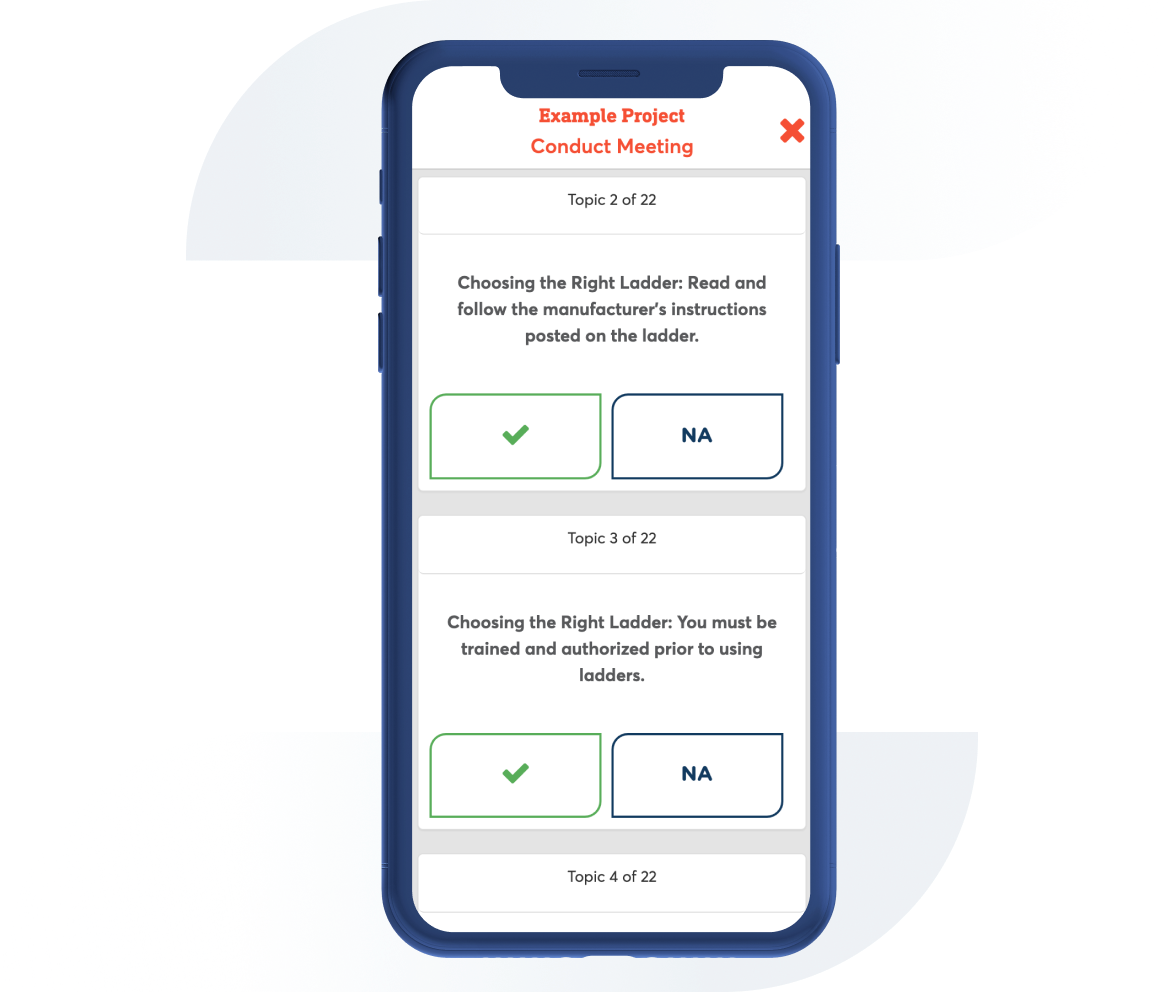Fire Extinguishers Toolbox Talk
Contributor: Safesite Jurisdiction: OSHA
Use this toolbox talk to review the locations and correct use of fire extinguishers and other fire suppression equipment.

1. Fire extinguishers must be inspected or given a "quick check" every 30 days. Inspections cover: Is the extinguisher in the correct location? Is it visible and accessible? Does the gauge or pressure indicator show the correct pressure?
2. Ratings of fire extinguishers: A Rating: Air-pressurized water extinguishers can handle ordinary combustibles such as paper, cloth, wood, rubber and many plastics.
3. Ratings of fire extinguishers: B Rating: Carbon dioxide or multi-purpoe dry chemical extinguishers are used for fires in oils, gasoline, some paints, lacquers, grease, solvents and other flammable liquids.
4. Ratings of fire extinguishers: C Rating: Dry chemical extinguishers fight fires in wiring, fuse boxes, live electrical equipment, computers and other electrical sources.
5. Ratings of fire extinguishers: Multipurpose Rating: This type of extinguisher also can handle ordinary combustibles, flammable liquids or electrical equipment, making it suitable for use on A-, B- and C-type fires.
6. Ratings of fire extinguishers: Class D: This rating is specific to combustible metals that require special extinguishers. Fires that are comprised of powders, flakes or shavings of combustible metals (magnesium, titanium, potassium and sodium) require Class D extinguishers.
7. Ratings of fire extinguishers: Class K: Kitchen fires often involve cooking fluids such as oils and fats. Class K extinguishers are engineered to handle these types of fires. Note: Some fire extinguishing equipment may not put out fires involving vegetable oil in deep-fat fryers. Please check with the extinguisher manufacturer to be sure.
8. Steps when responding to a fire that has just started to burn: Engage the fire alarm and use 9-1-1- to alert the fire department, if appropriate.
9. Steps when responding to a fire that has just started to burn: Choose the appropriate type of fire extinguisher.
10. Steps when responding to a fire that has just started to burn: Identify a safe evacuation path before approaching the fire. Do not allow the fire, heat or smoke to come between you and the evacuation path.
11. Steps when responding to a fire that has just started to burn: Discharge the extinguisher within its effective range using the P-A-S-S. technique (see below).
12. Steps when responding to a fire that has just started to burn: After putting out the fire, back away in case it reignites.
13. Steps when responding to a fire that has just started to burn: If the extinguisher is empty but the fire is not out, evacuate immediately.
14. Steps when responding to a fire that has just started to burn: Evacuate immediately if the fire progresses beyond its initial stage of burning.
15. Extinguisher P-A-S-S Technique: Pull the pin at the top of the cylinder to unlock the operating lever.
16. Extinguisher P-A-S-S Technique: Aim the hose or nozzle at the base of the fire.
17. Extinguisher P-A-S-S Technique: Squeeze the lever to discharge the agent that will extinguish the fire.
18. Extinguisher P-A-S-S Technique: Sweep from side to side, aiming at the base of the fire until the fire is out.
19. Write Comments or Remarks here:
Additional Comments

Can't find what you are looking for?
